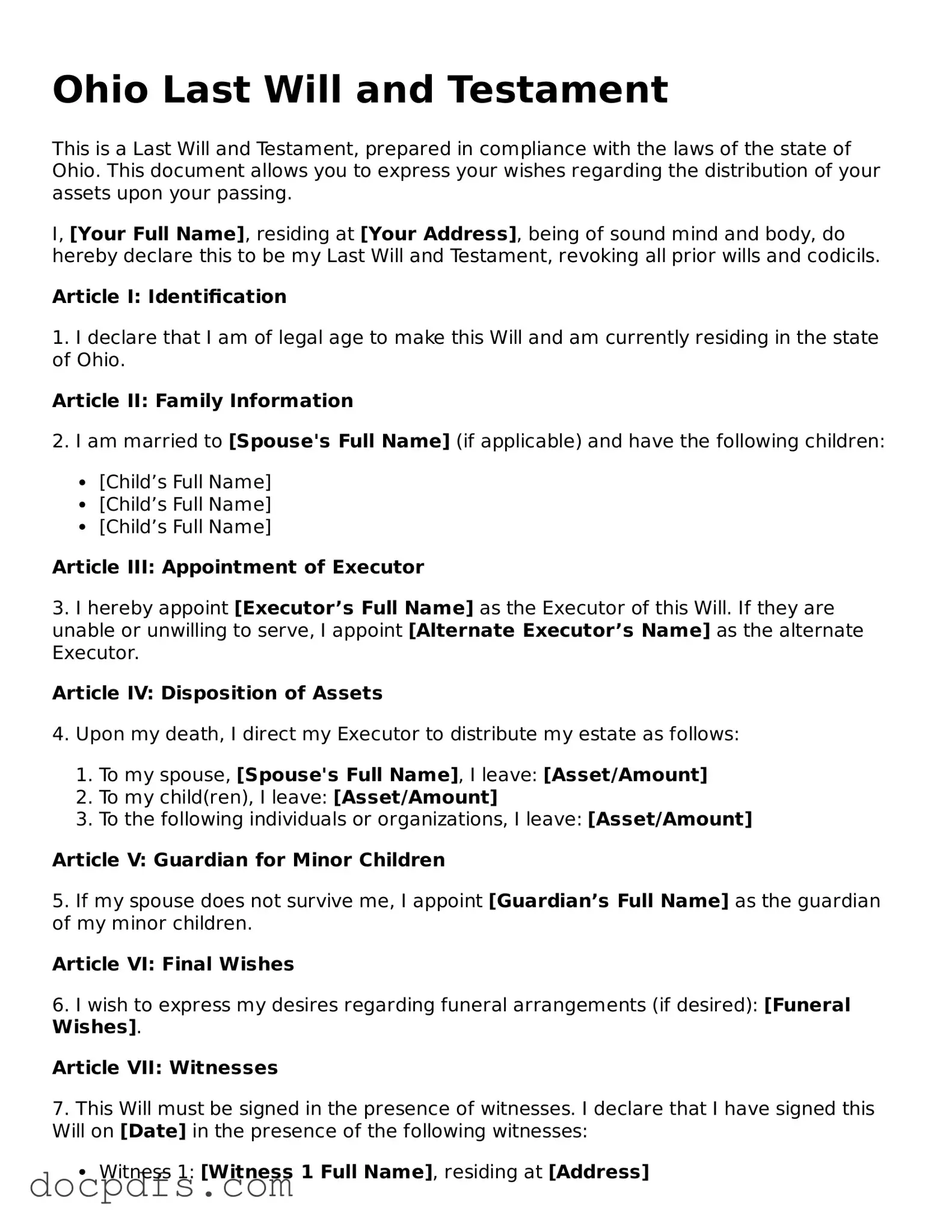What is a Last Will and Testament in Ohio?
A Last Will and Testament is a legal document that outlines how a person's assets and affairs should be handled after their death. In Ohio, this document allows individuals to specify who will inherit their property, appoint guardians for minor children, and name an executor to manage the estate. It serves as a crucial tool in ensuring that your wishes are honored and can help prevent disputes among family members.
Who can create a Last Will and Testament in Ohio?
In Ohio, any individual who is at least 18 years old and of sound mind can create a Last Will and Testament. Being of sound mind means that the person understands the nature of the document they are signing and the implications of their decisions regarding asset distribution and guardianship.
Do I need a lawyer to create a Last Will and Testament in Ohio?
No, you do not necessarily need a lawyer to create a Last Will and Testament in Ohio. While having legal assistance can be beneficial, especially for complex estates, individuals can draft their own wills using templates or forms available online. However, it’s important to ensure that the will meets Ohio’s legal requirements to be valid.
What are the requirements for a valid Last Will and Testament in Ohio?
For a Last Will and Testament to be valid in Ohio, it must meet the following criteria:
-
The will must be in writing.
-
The testator (the person creating the will) must sign the document.
-
The will must be witnessed by at least two individuals who are present at the same time.
-
Witnesses must be at least 18 years old and should not be beneficiaries of the will.
These requirements help ensure that the will is legally binding and reflects the true intentions of the testator.
Can I change or revoke my Last Will and Testament in Ohio?
Yes, you can change or revoke your Last Will and Testament in Ohio at any time while you are alive. To make changes, you can either create a new will that explicitly revokes the old one or add a codicil, which is a legal document that amends the original will. It's essential to follow the same formalities as the original will to ensure that the changes are valid.
What happens if I die without a Last Will and Testament in Ohio?
If you die without a Last Will and Testament, you are considered to have died "intestate." In this case, Ohio's intestacy laws will determine how your assets are distributed. Generally, your property will be divided among your closest relatives, such as your spouse, children, or parents. This process may not align with your wishes, making it crucial to create a will to ensure your preferences are followed.
How do I ensure my Last Will and Testament is properly executed?
To ensure that your Last Will and Testament is properly executed in Ohio, follow these steps:
-
Draft the will according to Ohio's legal requirements.
-
Sign the will in the presence of at least two witnesses.
-
Have your witnesses sign the will while you are present.
-
Store the will in a safe place and inform your executor and loved ones of its location.
By taking these steps, you can help ensure that your will is valid and that your wishes will be honored after your passing.
